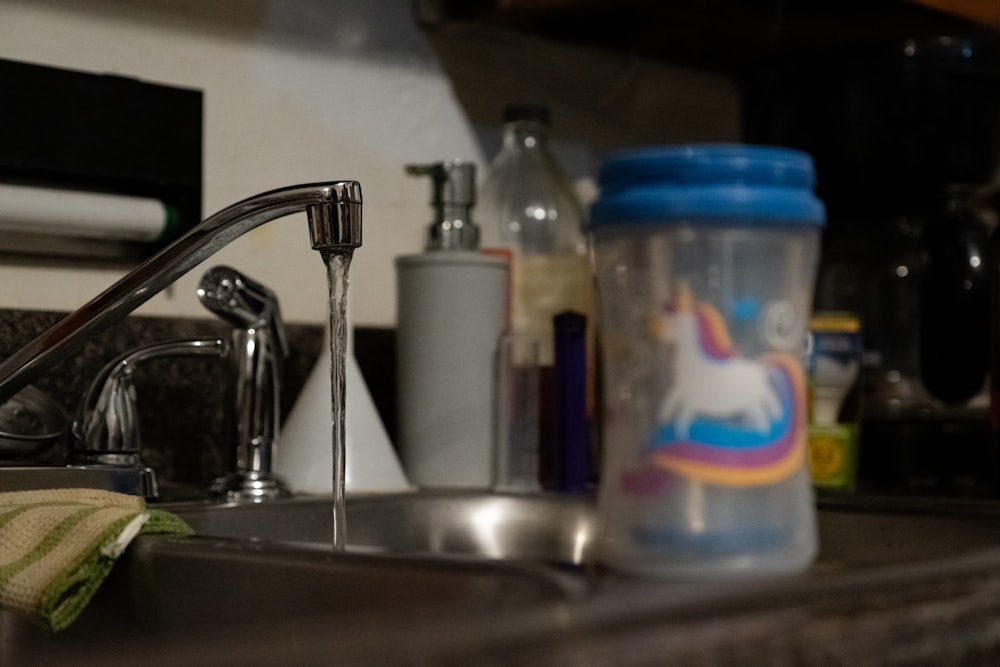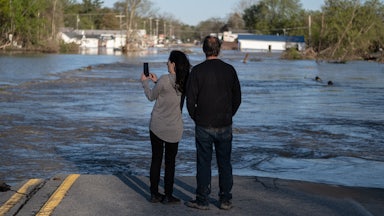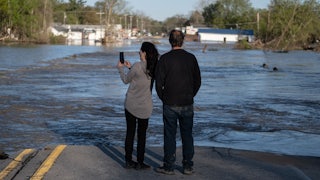Last month, the Trump administration posted a celebratory press release announcing the Environmental Protection Agency’s fourth round of cuts during President Donald Trump’s second term, part of EPA administrator Lee Zeldin’s stated commitment to ax two-thirds of its budget. Zeldin has called the cuts a necessary effort to rein in profligate spending, including on “wasteful DEI and environmental justice initiatives.” The EPA has since announced that it will also modify (i.e., soften) the implementation of the Clean Air Act’s Regional Haze Program to reduce the burden “on power plants and other sectors,” and “reconsider” wastewater regulations for coal-burning power plants.
Environmental experts, however, including current and former EPA officials, say Zeldin’s slash-and-burn approach is not in fact a countermeasure to needless initiatives that benefit liberal hubs but, rather, an alarming rollback of environmental protection efforts that will almost certainly harm President Donald Trump’s own voters. “It’s practically inevitable” that more people will get sick from reduced regulation and the loss of funding, a current EPA staffer said, speaking on the condition of anonymity since they were not authorized to discuss policy changes.
Zeldin’s move to “terminate” the EPA’s environmental justice division seems to signal a misapprehension of what the term “environmental justice” actually means. These grants are “going to parts of our country that have the biggest challenges, that have been most underserved. And it’s not by accident that that winds up being places that politically have become very conservative,” said Matthew Tejada, a senior vice president at the Natural Resources Defense Council who previously served as deputy assistant administrator for environmental justice at the EPA.
After the EPA announced its cuts last month, data scientists affiliated with the Public Environmental Data Partners posted a map of recent environmental justice grants, showing tens of millions of dollars earmarked for red states. That includes $1 million designated to reduce “the number of children exposed to lead” in Mobile County, Alabama, and $19.9 million to create “resilience hubs” in southwest Florida that would serve as cooling centers during heat emergencies and would otherwise aid with disaster planning.
Deborah McGrath, assistant dean of the environment at the University of the South, described a 2023 visit to Colfax, Louisiana, where open incineration pits were polluting the air. “Without an environmental justice arm and without research, I don’t know how you protect those communities. And I think there are a lot of them in the southern United States.”
There are scores of other examples, including improving flood preparedness in Pennsylvania, addressing chronic dumping in distressed communities in Tennessee, and improving air quality monitoring in Louisiana.
“Just thinking about the middle of Alabama, it’s not just fixing their sewer systems—it’s getting them sewer systems,” Tejada said. Environmental justice grants are uniquely capable of making necessary infrastructure improvements in areas “that are particularly rural and have lower incomes and not a big enough tax base,” he added. The grants are designed to be flexible, making them effective supplements—or even replacements—for other sources of state and federal funding.
A current EPA employee expressed bewilderment at the way the Trump administration has politicized these initiatives. The employee said Zeldin has characterized environmental justice grants as something the Biden administration used as “an excuse to hand out funds to left-wing activists. And that’s just not what happened.”
Other experts agreed that environmental justice should be a nonpartisan issue. Parts of the country “have disproportionate levels of exposure to pollutants and poorer environmental quality than other parts of the country,” said Jennifer Orme-Zavaleta, a former four-decade veteran of the EPA. Simply put, “environmental justice was a way of trying to equalize that for all communities.”
Now, she said, employees are terrified about the agency’s direction. Already, many environmental justice employees have been placed on leave, an agency source said, and more cuts are expected. “People are so terrorized, so paranoid,” Orme-Zavaleta said.
The EPA did not respond to requests for comment.
In addition to slashing environmental justice initiatives, Zeldin’s team is expected to dismantle or gut the agency’s Office of Research and Development, according to multiple current and former staffers. The New York Times previously reported on the cuts last month.
In late March, eight Democratic members of the House Committee on Science, Space, and Technology sent a letter to Zeldin “demanding that he cease any plans to weaken or shutter” the ORD, arguing that the office’s existence is enshrined in law and that attempts to dissolve it would be illegal. “It would also be a catastrophe for public health, environmental protection, and the civil servants working in ORD offices across the country,” the letter declared.
Scientists at the ORD helped uncover the link between PFAS—better known as “forever chemicals”—and potentially deadly health issues, said urban ecologist Jonathan Behrens. “Without this work, we would have never known the harm posed by these compounds,” including possibly altering childhood development and hormone levels and increasing the risk of certain cancers, he said.
Behrens also cited ORD’s importance in studying fish and insect populations. The data “has just been so critical to our understanding of how everything from climate change to development and the release of contaminants are affecting our waterways and the organisms that live in there.” Without this data, Behrens continued, he and other scientists would “have nothing to analyze.”
Many Americans don’t understand the complexity of water systems or the potential health consequences of excess pollution, said Amanda DelVecchia, assistant professor at the University of North Carolina at Chapel Hill. Algal blooms caused by agricultural runoff and other factors are linked to hepatotoxins and neurotoxins, while high nitrates in drinking water can impact “infants’ ability to transport oxygen in their blood,” she said. “The pressures are constantly getting worse, and we don’t even fully understand the health impacts or the sources of some contaminants.” She’s worried about this research being “on the chopping block right now.”
Behrens emphasized that cuts at the ORD will not just affect short-term research projects but will also have a downstream impact across the scientific field. “You could count quite a few people in probably every single state agency that either had a point in their career where they worked for EPA ORD or worked really closely with someone who did,” he said. It’s not clear where those scientists will now go, or who will cultivate the next generation of researchers.
“I don’t know how many people still remember what our environment was like in the ’60s, leading up to 1970 in the creation of EPA, but we had conditions where a brown haze of smog would be hanging over cities,” said Orme-Zavaleta. It may take years for the effects of the cuts to manifest, she noted, but that doesn’t mean the impact won’t be disastrous.
Suzi Ruhl, former senior counsel at the EPA’s office of environmental justice, agreed with those concerns, adding that many of the Trump administration’s proposed cuts seem to disregard the legal requirements to make changes to EPA policies. The administration needs to go through the standard bureaucratic process before softening regulations, she said, including giving impacted communities the opportunity to weigh in on changes.
Despite some public blowback, she said, many Americans don’t seem to appreciate the seismic implications of the EPA cuts both for public health and for the legal system. “More people in this country understand rules of engagement for sporting events than they do for rules of engagement for democracy,” Ruhl said. “And with what’s happening today, we are seeing a significant amount of action that is not following the rule of law.”








